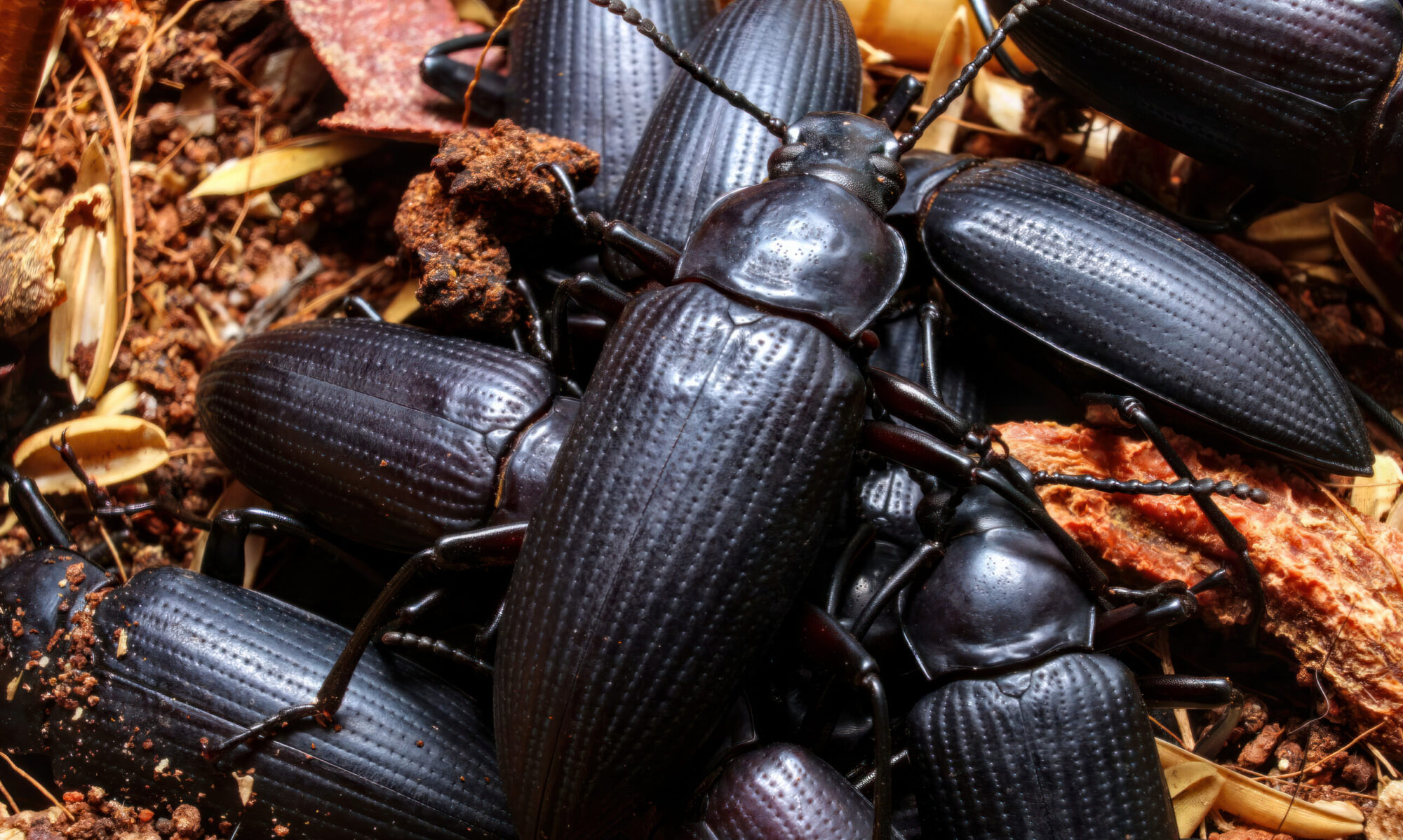Zophobas morio, commonly known as the superworm, is a species of beetle larvae that can be raised to adulthood as darkling beetles. In this post, we will take a closer look at the physical characteristics, habitat, and husbandry requirements of Zophobas morio darkling beetles.
Physical Characteristics:
Zophobas morio darkling beetles are a medium-sized species of beetle that typically grow to between 1 and 1.5 inches in length. They have a dark brown or black, oblong-shaped body with a hard exoskeleton. They have six legs and two antennae located towards the front of their body. They also have wings, but are not capable of sustained flight.
Habitat:
In the wild, Zophobas morio darkling beetles are found in Central and South America, where they live in a variety of habitats, including forests, grasslands, and agricultural fields. In captivity, they are typically kept in a plastic container with a substrate of oat bran, wheat bran, or cornmeal.
Husbandry:
Zophobas morio darkling beetles can be kept in captivity as long as their relatively simple husbandry requirements are met. They require a warm and humid environment, with a temperature range between 75-85°F and a relative humidity of 60-80%. To maintain the appropriate humidity, it is recommended to mist the substrate with water once or twice a week.
Zophobas morio darkling beetles are primarily herbivorous and require a diet that includes fruits and vegetables. They may also eat commercially available diets specifically formulated for beetles and other insects. It is important to provide them with a varied diet to ensure that they receive all the necessary nutrients.
Darkling beetles are prolific breeders and will lay eggs in the substrate. To prevent overcrowding, it is recommended to remove the eggs and transfer them to a separate container. The eggs will hatch into larvae, which can be raised to adulthood to continue the breeding cycle.
Conclusion:
Zophobas morio darkling beetles are an interesting and important species that can be raised from larvae to adulthood in captivity. By understanding their biology and husbandry requirements, we can better care for and appreciate this species. Whether you are a pet owner or a breeder, following the appropriate husbandry guidelines can ensure the health and well-being of your Zophobas morio darkling beetle population.














